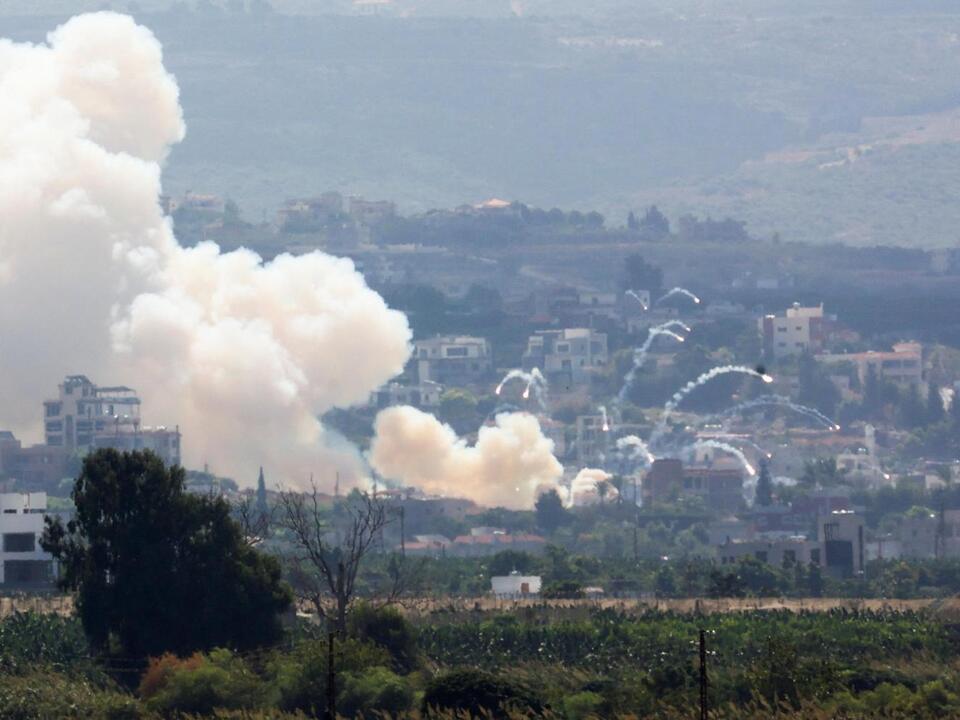Physical Address
304 North Cardinal St.
Dorchester Center, MA 02124
Physical Address
304 North Cardinal St.
Dorchester Center, MA 02124

Early Monday morning, southern Lebanon experienced a series of devastating missile strikes, resulting in a reported death toll exceeding 490 people, including 35 children and 58 women. The Israeli military claimed that the attacks aimed to target weapons belonging to Hezbollah that were hidden in residential areas. This marks a significant escalation in the ongoing conflict, with Monday being described as the deadliest day of fighting between Israel and Hezbollah since 2006.
According to Lebanon’s health ministry, the strikes injured at least 1,645 individuals. The violence on Monday has surpassed the death toll from the catastrophic explosion at Beirut’s port in 2020, which left nearly 200 people dead and thousands injured.
In response, the Israeli military reported that around 35 rockets or drones had been fired from Lebanon into northern Israel, resulting in one injury. Most of these projectiles either landed in uninhabited areas or were intercepted. As part of their military strategy, Israel warned civilians in Lebanon—via automated phone calls, text messages, and hacked radio messages—to avoid locations associated with Hezbollah.
The Israel Defense Forces (IDF) released images online suggesting that their recent airstrikes triggered additional explosions related to Hezbollah’s weaponry. The IDF stated that every targeted building contained weapons—including rockets and drones—intended to harm Israeli civilians. They announced that they hit around 300 Hezbollah targets during the strikes on Monday morning.
In a bid to manage the escalating situation, U.S. President Joe Biden indicated on Monday that America was working to de-escalate tensions in Lebanon. He said, “I’ve been briefed on the latest developments in Israel and Lebanon. My team is in constant contact with their counterparts, and we’re working to de-escalate in a way that allows people to return home safely.”
In conjunction with these military actions, the Pentagon confirmed that additional U.S. troops were being deployed to the Middle East. While precise numbers and the exact roles of the new forces were not specified, the U.S. already has approximately 40,000 troops stationed in the region.
This surge in hostilities followed a weekend marked by unceasing crossfire between Israel and Hezbollah. On Saturday night, Hezbollah launched more than 100 rockets toward northern Israel, resulting in three injuries and widespread fear in an area already experiencing mass evacuations.
The IDF’s spokesperson, Avichay Adraee, shared a video on social media warning Lebanese residents about upcoming raids on buildings used by Hezbollah to store and launch weapons. He stated that residents should evacuate immediately and accused Hezbollah of endangering civilians.
Israeli Defense Minister Yoav Galant echoed this sentiment in his message to the public, highlighting that operations against Hezbollah would continue until security was restored for northern residents forced to evacuate their homes. His remarks suggested anticipation of retaliatory actions from Hezbollah or allied groups in the region.
Lebanon’s state media reported that some residents in areas of Beirut and southern Lebanon, strongholds of Hezbollah support, received automated messages urging them to evacuate. An incident in the office of Lebanon’s Information Minister Ziad Makary confirmed this, as someone in the office received such a warning call.
The escalation in violence stems from ongoing tensions and hostilities between Israel and Hezbollah, which began intensifying after Israel’s military response to a Hamas attack on October 7. Both groups, backed by Iran, are designated as terrorist entities by the Israeli and U.S. governments.
While the U.S. expressed support for Israel’s right to defend itself, it has also voiced concerns over the dangers of a broader conflict in the region. Following the uptick in hostilities, U.S. Secretary of Defense Lloyd Austin communicated with Israel’s Defense Minister. He underscored the need to seek a diplomatic resolution and stressed the importance of protecting U.S. citizens and forces in the Middle East.
Concerns about a broader conflict center on the strength of Hezbollah, regarded as a more powerful and better-equipped militant group compared to Hamas. Observers note that the potential for wider violence looms over ongoing military operations, mainly due to Hezbollah’s capacity to retaliate with significant force.
This latest violent chapter comes in the wake of poorly concealed Israeli operations that targeted Hezbollah’s communication systems, leading to the deaths of approximately 40 people, including several Hezbollah members. This series of attacks was characterized by Hezbollah leader Hassan Nasrallah as a “declaration of war,” marking a crucial moment in the increasingly volatile conflict.
Source: The Associated Press



